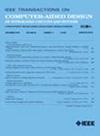An Architecture-Level CPU Modeling Framework for Power and Other Design Qualities
IF 2.7
3区 计算机科学
Q2 COMPUTER SCIENCE, HARDWARE & ARCHITECTURE
IEEE Transactions on Computer-Aided Design of Integrated Circuits and Systems
Pub Date : 2024-12-25
DOI:10.1109/TCAD.2024.3522877
引用次数: 0
Abstract
Power efficiency is a critical design objective in modern microprocessor design. To evaluate the impact of architectural-level design decisions, an accurate yet efficient architecture-level power model is desired. However, widely adopted analytical power models like McPAT and Wattch have been criticized for their unreliable accuracy, while machine learning (ML) methods like McPAT-Calib rely on sufficient known designs for training and perform poorly when available designs are limited, which is the case in realistic scenarios. In this work, we propose PANDA, an innovative architecture-level solution that combines the advantages of analytical and ML power models. It achieves unprecedented high accuracy on unknown new designs even when there are very limited designs for training. Besides being an excellent average power model, we also extend PANDA to support the time-based power trace prediction, which can enable the analysis of peak power, power fluctuations, and voltage fluctuation. This is highly challenging at the architecture level. Other qualities, such as area, performance, and energy accurately, can also be supported. In addition to single design quality, PANDA can model the tradeoffs among different design qualities, such as the tradeoff between power and timing, by predicting the Pareto-optimal curve. Finally, PANDA can further support power prediction for unknown new technology nodes. Our experiment shows that, for average power prediction, our method can achieve high accuracy with a correlation coefficient R of 0.99 and mean absolute percentage error (MAPE) of 7.91% even when only one configuration is known, outperforming McPAT-Calib which has R of -0.24 and MAPE of 35.96%. For time-based power trace prediction, our method can achieve a low MAPE of 4.34%, outperforming the state-of-the-art method Powertrain which has a MAPE of 53.8%.用于电源和其他设计质量的体系结构级CPU建模框架
在现代微处理器设计中,功率效率是一个重要的设计目标。为了评估架构级设计决策的影响,需要一个准确而有效的架构级功率模型。然而,广泛采用的分析能力模型(如McPAT和watch)因其不可靠的准确性而受到批评,而机器学习(ML)方法(如McPAT- calib)依赖于足够的已知设计进行训练,并且在可用设计有限的情况下表现不佳,这是现实场景中的情况。在这项工作中,我们提出了PANDA,这是一种创新的架构级解决方案,结合了分析模型和机器学习功率模型的优点。即使在训练设计非常有限的情况下,它也能在未知的新设计上达到前所未有的高精度。除了作为一个优秀的平均功率模型外,我们还扩展了PANDA,支持基于时间的功率跟踪预测,可以分析峰值功率,功率波动和电压波动。这在体系结构级别上极具挑战性。其他品质,如面积,性能和能量精度,也可以支持。除了单一设计质量之外,PANDA还可以通过预测帕累托最优曲线来模拟不同设计质量之间的权衡,例如功率和时间之间的权衡。最后,PANDA可以进一步支持未知新技术节点的功率预测。实验表明,对于平均功率预测,即使只知道一种配置,我们的方法也能获得较高的准确度,相关系数R为0.99,平均绝对百分比误差(MAPE)为7.91%,优于R为-0.24,MAPE为35.96%的McPAT-Calib。对于基于时间的功率轨迹预测,我们的方法可以实现4.34%的低MAPE,优于最先进的方法Powertrain, MAPE为53.8%。
本文章由计算机程序翻译,如有差异,请以英文原文为准。
求助全文
约1分钟内获得全文
求助全文
来源期刊
CiteScore
5.60
自引率
13.80%
发文量
500
审稿时长
7 months
期刊介绍:
The purpose of this Transactions is to publish papers of interest to individuals in the area of computer-aided design of integrated circuits and systems composed of analog, digital, mixed-signal, optical, or microwave components. The aids include methods, models, algorithms, and man-machine interfaces for system-level, physical and logical design including: planning, synthesis, partitioning, modeling, simulation, layout, verification, testing, hardware-software co-design and documentation of integrated circuit and system designs of all complexities. Design tools and techniques for evaluating and designing integrated circuits and systems for metrics such as performance, power, reliability, testability, and security are a focus.

 求助内容:
求助内容: 应助结果提醒方式:
应助结果提醒方式:


